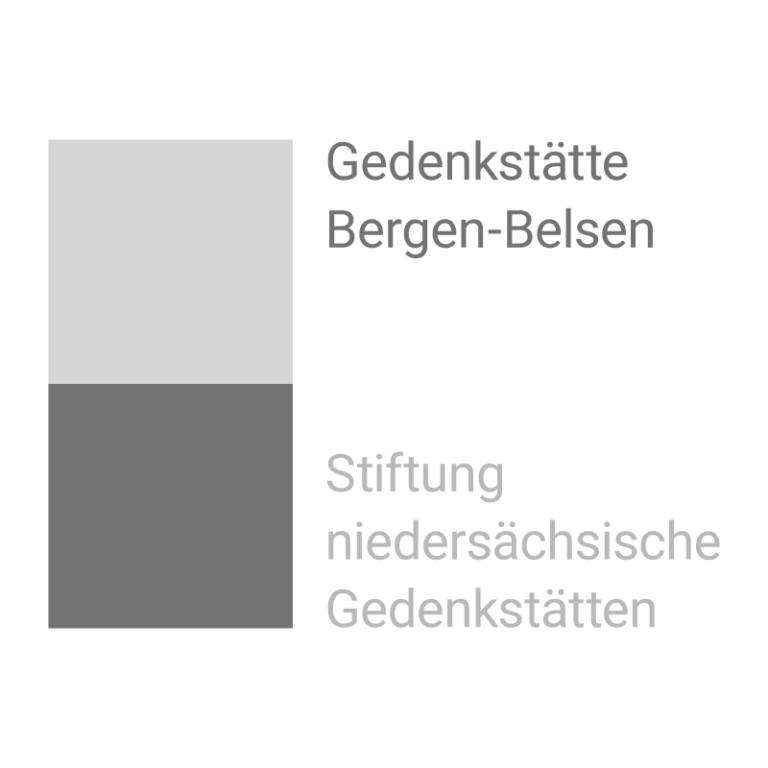Pursuant to the Lower Saxony Memorials Foundation Act (section 2, paragraph 1), the Foundation is responsible for designing, managing and maintaining the Bergen-Belsen and Wolfenbüttel Prison memorials both as places of commemoration dedicated to the victims of Nazi persecution and the Nazi judiciary, and as places of learning for future generations.
Bergen-Belsen has been a site of international remembrance since 1945. Monuments from the post- war period commemorate the over 70,000 people who died here between 1941 and 1945. Exhibitions set up in 1966 and 1990 outlined the history of Bergen-Belsen, but only in the past two decades has detailed research been carried out into the multi-faceted history of this site as a POW camp, concentration camp and displaced persons camp. The results of this research can be seen in the permanent exhibition that opened in the Documentation Centre in 2007.
Today the Bergen-Belsen Memorial is a place of remembrance, a place where historical research is carried out and historical knowledge is collected and preserved, and it is a place of learning and reflection. Every year, about 250,000 people visit the Memorial and more than 1,000 groups take part in guided tours, study days and projects here.
Educational work at the Bergen-Belsen Memorial focuses on personal testimonies from survivors of the POW and concentration camp. Exploratory learning opens a window onto the life stories of former prisoners and the history of Nazi crimes. The Memorial’s goal is to convey well-founded knowledge and encourage the development of reflective empathy and moral competence. Connections between the past and the present emphasize the ongoing relevance of Bergen-Belsen today.
To further engage in researching, testing and evaluating digital approaches to the site’s history and to help inform visitors about the Bergen-Belsen memorial site and especially address the interest of younger generations, the Memorial Bergen-Belsen and the SPECS research group of University Pompeu Fabra, Barcelona, have since 2012 developed and deployed an approach that combines on- site Augmented Reality (AR) with a visitor-driven presentation of historical content.
A tablet application helps the visitor to navigate an abstracted representation of the former concentration camp, projected in and over the current landscape, a 1km2 nature park nearly void of historical remains. Beyond topographical understanding, the app yields a myriad of access points to the site’s complex history, via source material such as diary and interview fragments, drawings, and photographs, and information about these materials. As an approach, the combination of non-linear content exploration and physical environment navigation is rooted in recent scientific advances that reveal the important relation between navigation and the formation of memory. Taking the visitor actively outside, the app reconnects and engages the landscape itself with its history.
The past years, the Memorial has deployed the tablet app in its memorial practice, especially embedding it as tool during school class visits. As part of their day program, the pupils freely explore the outdoor environment and gather historical items of their own interest, which subsequently will form the starting points for a group discussion lead by their guide. This second stage crucially contextualizes the collected ‘shards’ and relates them to the important sides of the larger story. Autonomously generated interest is thus followed-up with essential information, without any hiding of an authoritative voice.
However still a work in progress, the project and its practical deployment have shown a fruitful range of results, effects and observations. Young visitors are very positive about the approach, noting that it allows them an active, engaging entrance to the difficult topics that suits their daily experience rather than the more passive one traditionally expected from historical education. One of the most commonly noted requests is a request for more information: on more items, people, buildings and topics – a sign that clearly underlines the generation’s autonomous interest. From the side of educators and curators, the non-linear, visitor-driven approach is noted as an interesting, if challenging, call to break open traditional orders of how to introduce the site’s history, and do so for generations of increasingly diverse cultural backgrounds. In general, the Memorial’s digital strategy aims at presenting the site’s history in contemporary approaches, encouraging the visitors’ participation in discussions on historic and current topics and positioning itself as an international competence center.
Role in the Project
With its expertise and longstanding experience in digital on-site experience, the Bergen-Belsen Memorial contributes to the conception, testing and evaluation of the location-based engagement level of the VHH-MMSI. On-site trials with different visitor groups and especially their feedback in regard to the enhancement of the spatial experience are used to improve the usability and the overall user experience of the system. Based on its own collections and the expert knowledge of its staff, the Memorial also supports the research, collection, cataloguing, and annotation of film, photo, and text documents in the project.
Team Members
Stephanie Billib
Digital strategies and social media expert, main contact and representative of the Bergen-Belsen Memorial
Bergen-Belsen Memorial (Stiftung niedersächsische Gedenkstätten)
Participation in Events
Pre-Kick-off MeetingMeeting Friday, 19.10.2018, 09:15 to Saturday, 20.10.2018, 18:00 |
Kick-off MeetingMeeting Wednesday, 27.02.2019, 09:15 to Friday, 01.03.2019, 20:00 |
Consortium MeetingMeeting Tuesday, 23.02.2021, 15:00 to Wednesday, 24.02.2021, 19:00 |

